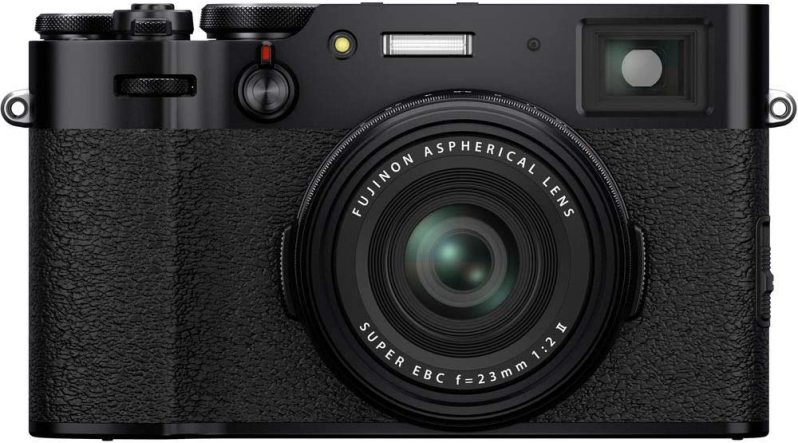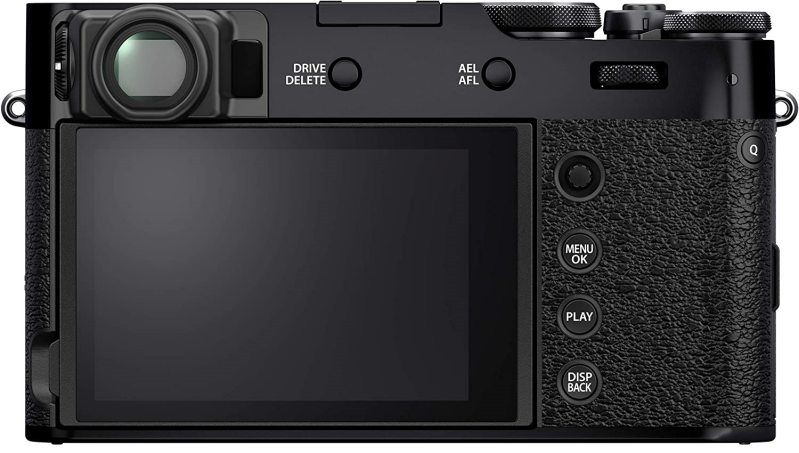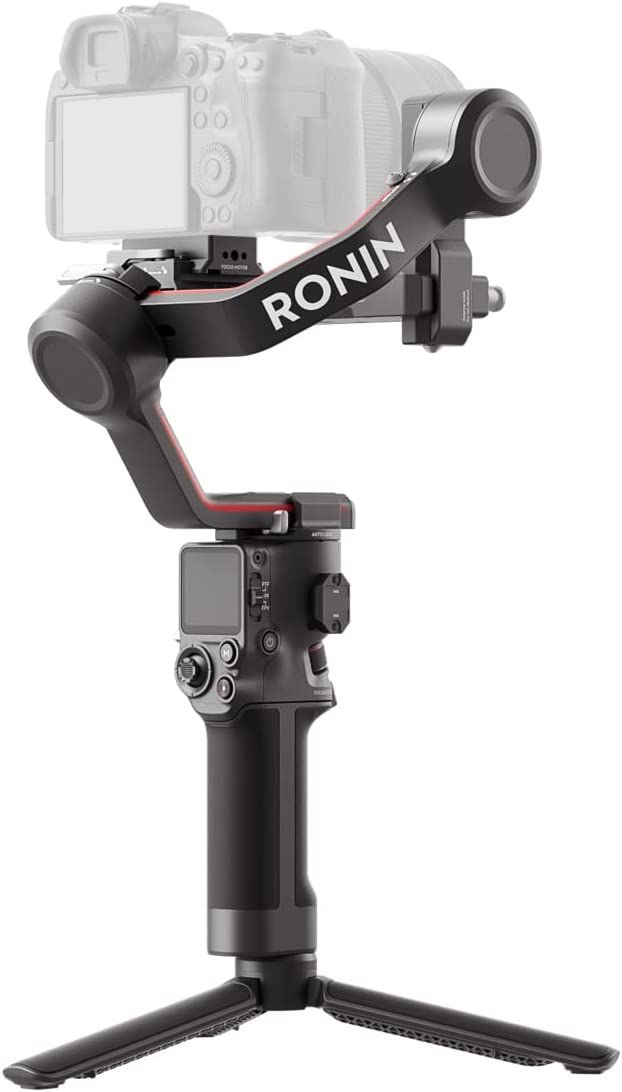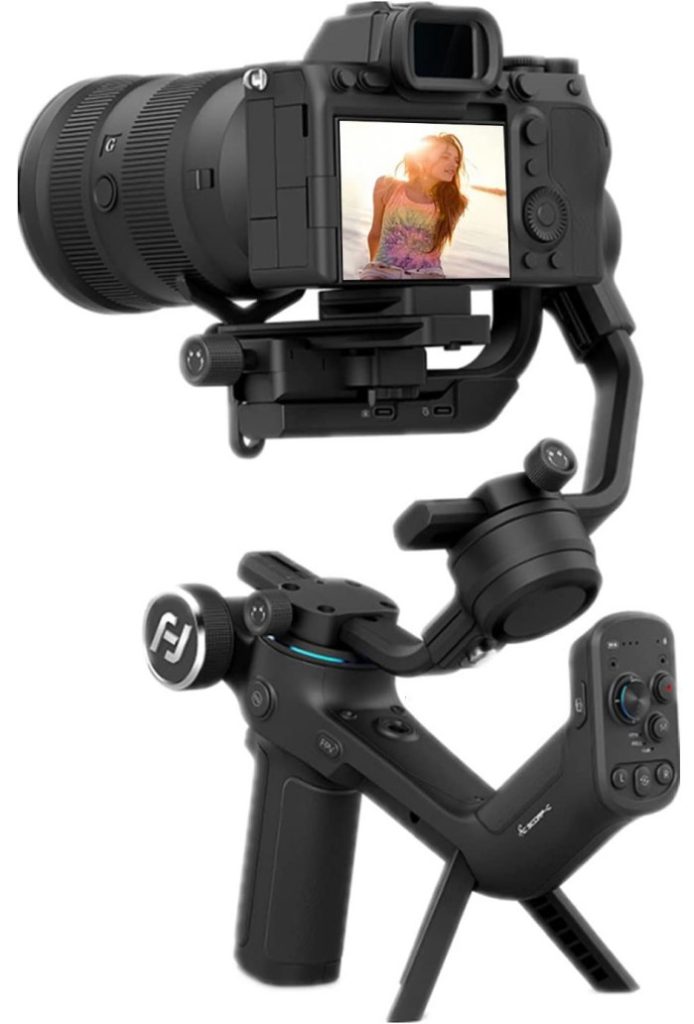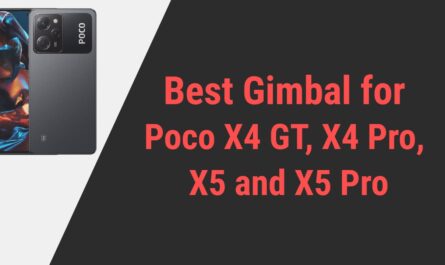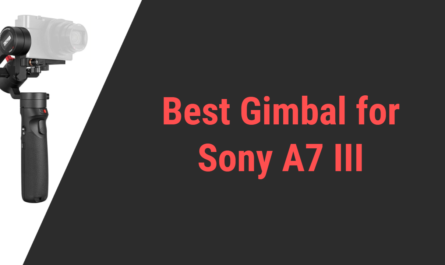There are many gimbals in the market, and there are many cameras as well. The Fujifilm X100V is a highly acclaimed camera known for its exceptional image quality and compact size. To achieve even more stable and smooth footage, many photographers and videographers use the gimbal.
In this article, we will be discussing some of the best gimbals available for the Fujifilm X100V and what features you should consider when making your purchase. Whether you’re a professional or a hobbyist, there is a gimbal on this list that will meet your needs and help you take your photography and videography to the next level.
There are several reasons why a gimbal can be beneficial when used with a camera such as the Fujifilm X100V,
- A gimbal helps to stabilize the camera and reduce camera shake. This is especially useful when shooting video, as it can help to produce smooth and professional-looking footage.
- A gimbal allows for greater flexibility in camera movement. With a gimbal, you can capture smooth and flowing panning shots, as well as tilting and rotating shots, without the need for a bulky tripod.
- A gimbal allows for more creative camera angles and perspectives. Gimbals can be used to achieve unique and dynamic shots that would be difficult or impossible to achieve without one.
- A gimbal can be useful in capturing moving subjects, whether it is a running child, a skateboarder, or a car driver. It can help keep the subject in focus and the frame, even when the camera is moving.
All in all, you will get to experience and experiment with the best of your creativity with the use of the gimbal. But before we check for different gimbals, let us get to know the camera all too well.
Fujifilm X100V
Note:
All the gimbals mentioned here are tested with Fujifilm X100V and work perfectly fine.
| DJI RS 3 (Best Overall)

|
| DJI RS 3 Pro (Most High-end - Highest Payload Capacity & Comes with Advanced Features)
    |
| FeiyuTech SCORP-C (Cheapest Gimbal with Minimal Features)
    |
Fujifilm X100V
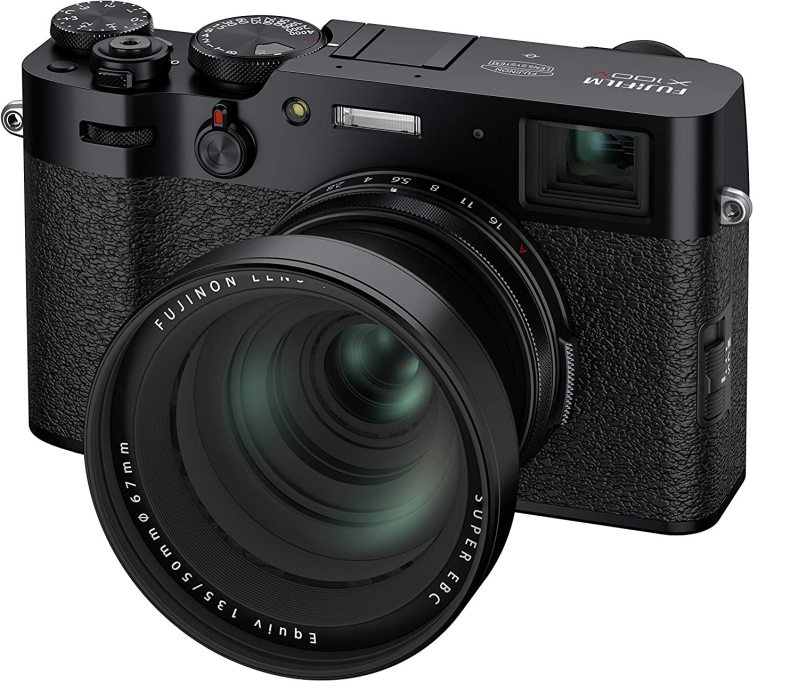

The Fujifilm X100V is a compact digital camera that is designed for both photography and videography. It is the fifth generation of the X100 series and is considered a premium compact camera.
The Fujifilm X100V is a highly-regarded compact camera that offers professional-grade image quality and performance in a small and portable package. It is a perfect camera for street photographers, travel photographers, and videographers looking for a high-quality, versatile camera that is easy to carry.
One of the standout features of the X100V is its 26.1-megapixel APS-C X-Trans CMOS 4 sensor, designed to produce high-quality images and reduce the need for post-processing. The camera’s Fujinon 23mm F2 lens is also a standout feature, known for its sharpness and clarity.
The lens is equivalent to a 35mm lens on a full-frame camera, making it versatile for a wide range of shooting situations. Another great feature of the X100V is its hybrid viewfinder, which allows you to switch between an electronic viewfinder (EVF) and an optical viewfinder (OVF), depending on your preference.
The camera’s autofocus system is also impressive, with a hybrid autofocus system that combines both phase and contrast detection, resulting in fast and accurate focusing.
The X100V can also shoot 4K video at 30fps, as well as Full HD video at up to 120fps, making it a great option for videographers. Additionally, the camera has a built-in ND filter, which allows you to shoot at slower shutter speeds in bright light without overexposing the image.
The X100V is also weather-sealed, making it a great option for outdoor photography, and has film simulation modes, multiple exposures, and other features that are expected from a high-end camera.
Key features of Fujifilm X100V
- 26.1-megapixel APS-C X-Trans CMOS 4 sensor- This sensor is designed to produce high-quality images and reduce the need for post-processing.
- Fujinon 23mm F2 lens- This lens is equivalent to a 35mm lens on a full-frame camera and is known for its sharpness and clarity.
- Hybrid viewfinder- The X100V features a hybrid viewfinder that allows you to switch between an electronic viewfinder (EVF) and an optical viewfinder (OVF), depending on your preference.
- 4K video recording- The X100V can shoot 4K video at 30fps, as well as Full HD video at up to 120fps.
- Advanced autofocus system- The X100V features a hybrid autofocus system that combines both phase and contrast detection, resulting in fast and accurate focusing.
- Built-in ND filter- The X100V has a built-in neutral density (ND) filter, which allows you to shoot at slower shutter speeds in bright light without overexposing the image.
- Compact and lightweight design- The X100V is small and lightweight, making it easy to carry around and use for street photography, travel, and other situations where a larger camera may be cumbersome.
- Other features include- a weather-sealed body, film simulation modes, and multiple exposures.
Now that you know almost everything you need to know about the camera, it is time that we bring you some gimbals which we find are best for X100V. All of the gimbals mentioned below are thoroughly tried and tested by us with this Fujifilm camera.
Best Gimbal for Fujifilm X100V
1. DJI RS 3
Among many brands that offer different gimbals, you will always come across the name DJI as it has many different gimbals to offer you. Usually, DJI is known for providing many different gimbals for DSLR and mirrorless cameras.
It is highly compatible with the Fujifilm X100V, making it possible to use the camera with the gimbal to achieve smooth and stable footage.
The DJI RS 3 is designed with advanced features and capabilities to meet the needs of professional photographers and videographers.
The gimbal’s compact and lightweight design and customizable controls make it easy to use on location, and the gimbal’s intelligent functions and long battery life make it an excellent choice for professional photographers and videographers.
Users have also praised the gimbal’s versatile camera control, which allows for full control of the camera’s focus, zoom, and other settings.
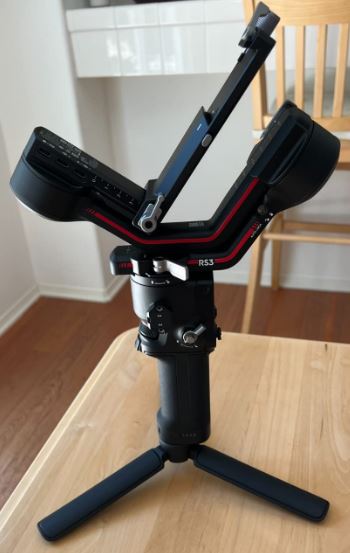

The DJI RS 3’s intelligent functions and long battery life are also highlighted as a plus by many users. The gimbal’s timelapse, panorama, and motion lapse features make it easy to create unique and creative shots.
We find the DJI RS 3 to be easy to set up and use, with customizable controls that can be configured to suit your needs and shooting style. We were highly impressed with the gimbal’s compact and lightweight design, which makes it easy to carry and use on location.
The DJI RS 3 is a professional-grade gimbal that offers advanced stabilization technology and versatile camera control. It is well-suited for professional photographers and videographers who are looking for a high-quality, easy-to-use gimbal that can help them achieve smooth and stable footage.
Key features of DJI RS 3
- High-precision stabilization- The gimbal’s advanced stabilization algorithm ensures smooth and stable footage, even when shooting in challenging conditions.
- Versatile camera control- It allows full control of the camera’s focus, zoom, and other settings, enabling you to easily switch between different shooting modes.
- Compact and lightweight design- It is quite lightweight and portable, making them easy to carry and use on location.
- Intelligent functions- DJI RS 3 is known for its intelligent functions, such as timelapse, panorama, and motion lapse can create different and creative shots.
- Customizable control-: The gimbal’s buttons and joystick can be configured to suit your needs and shooting style.
- Long battery life- It has a long battery life, allowing you to shoot for an extended period without interruption.
Pros
- Can handle the payload capacity of 4.5 kg
- Comes with a carry case
- Battery runtime
- OLED screen for ease of use
- Can be controlled remotely with the DJI app
Cons
- Price is a setback
2. DJI RS 3 Pro
If you want to go a little bit more advanced than the gimbal you have used before, DJI RS 3 pro will definitely fit your bill. As we used this gimbal with X100V, we can surely say that this gimbal will be a perfect match for your requirement, whatever they can be.
It is highly great in performance, and you will get the utmost professional results out of it. It is the latest version of the DJI RS series and is considered a top-of-the-line gimbal for professional photographers and videographers.
We found this gimbal to be a great gimbal due to its advanced stabilization technology, versatile camera control, and customizable controls. With full control over the camera’s focus, zoom, and other settings provided by the gimbal, you can quickly switch between shooting modes and get the desired results.
You will be highly impressed with its capacity for larger and heavier cameras because it can hold cameras up to 4.5 kg. This makes it a flexible choice for a variety of cameras and shooting circumstances.
The gimbal’s lengthy battery life enables you to shoot continuously for a considerable amount of time. Professional photographers and videographers who are engaged in lengthy shoots should pay particular attention to this.
That is one thing that will definitely make you confident about all the reasons why you should get this gimbal. If you are a professional photographer or videographer looking for a high-quality, advanced gimbal that offers versatile camera control, customizable controls, and intelligent functions, the DJI RS 3 Pro is a great option to consider for your Fujifilm X100V.
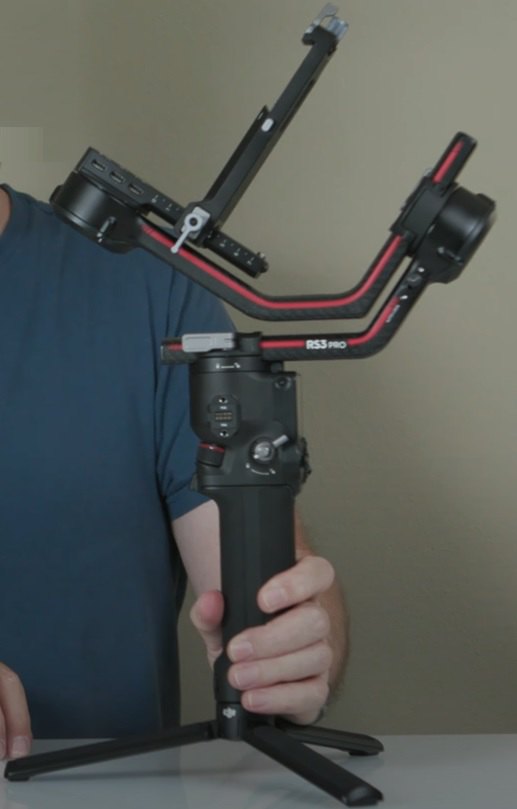

Key features of DJI RS 3 pro
- Highly Customizable controls- You can customize the joystick and the functionality of the gimbal as per your requirement.
- Professional control- The DJI RS 3 Pro has a built-in focus motor and control wheel that allows you to directly control the focus and zoom of the camera lens.
- Intelligent functions- The gimbal’s intelligent functions, such as timelapse, panorama, and motion lapse, can create different and creative shots.
- Highly impressive stabilization- The gimbal’s advanced stabilization algorithm ensures smooth and stable footage, even when shooting in challenging conditions.
- Improved payload: The DJI RS 3 Pro can support cameras up to 4.5 kg, making it suitable for larger and heavier cameras.
Pros
- Great payload capacity
- Ease to manage and use
- Battery life is impressive
- Physical mode switch
Cons
- The heavy cameras might become tough to balance
3. FeiyuTech SCORP-C
If you are looking for a gimbal that is compact and that you can use for a multipurpose, your search will lead you to this gimbal. It may be operated using a companion app on your smartphone and is made to be small and light.
Additionally, the SCORP-C has an internal rechargeable battery, so you won’t have to be concerned about running out of power while filming.
FeiyuTech has designed this gimbal to be perfectly compact and great in terms of everything, considering its overall performance. The SCORP-C is made of high-quality aluminum alloy, making it durable and able to withstand different weather conditions.
It comes at a price of the device that is not available at the moment, and it may vary based on the country or store as per decided, but what we know for sure is that this is one of the most affordable gimbals that you can get.
We are impressed with how it is compatible with various smartphones along with the cameras, and its holder can hold devices up to 3.5 inches wide. It can be controlled using a touchscreen interface on the device itself or using a companion app on your smartphone.
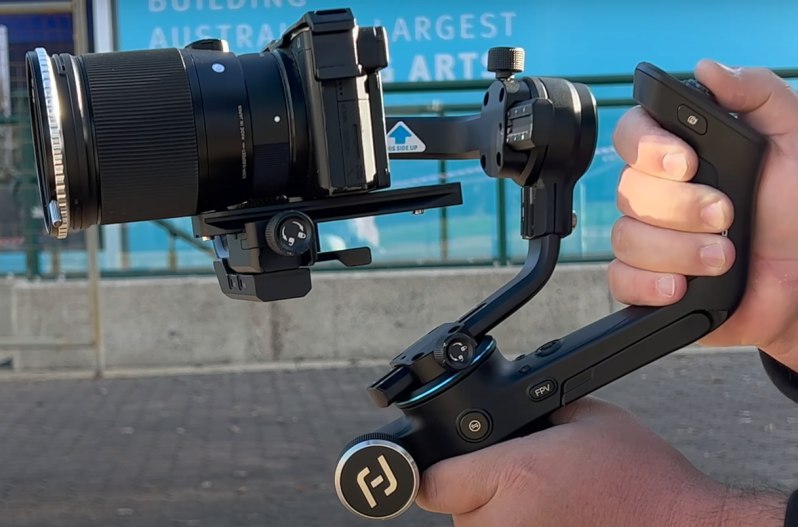

It has multiple operation modes like pan following, pan and tilt following, and all locked modes. We found the gimbal to be highly compact and lightweight, making it easy to carry and use with its 3-axis stabilization system that helps to keep your footage steady and smooth, even when you’re moving around or in a moving vehicle.
Key features of FeiyuTech SCORP-C
- Compact and lightweight design- The SCORP-C is designed to be easy to carry and easy to use, so you can take it with you wherever you go.
- 3-Axis Stabilization- It has a 3-axis stabilization system that helps to keep your footage steady and smooth, even when you’re moving around or in a moving vehicle.
- Multiple Operation Modes- It has multiple operation modes like pan following, pan and tilt following, and all locked modes.
- Touchscreen Control- It can be controlled using a touchscreen interface on the device itself or using a companion app on your smartphone.
- Built-in rechargeable battery- The SCORP-C has a built-in rechargeable battery, so you don’t need to worry about running out of power while you’re filming.
- Wireless Connectivity- It has wireless connectivity options like Bluetooth, which allows you to control the device remotely and share photos and videos directly from the stabilizer.
- Compatible with various smartphones- The SCORP-C is compatible with various smartphones, and its holder can hold devices up to 3.5 inches wide and 7.5 ounces in weight.
- Durable and weatherproof design- It is made of high-quality aluminum alloy, making it durable and able to withstand different weather conditions.
Pros
- Easy to balance and set up
- Center-weighted gives high stabilization
- Highly stabilized results
- Charges quickly, and the battery lasts for reasonable hours
Cons
- The app to control remotely could use some improvement
- Battery is not changeable.
By now, you have gone through three different gimbals that you can get for Fujifilm X100V, but now what might make you confused now is which one you should choose among many. We have prepared this buying guide to help to ensure you make the right decision,
What to look out for when choosing a gimbal for your camera?
- Camera Compatibility– Make sure the gimbal is compatible with the camera or smartphone you plan to use. Check for weight and size limits, as well as any additional mounts or adapters that may be required. Camera compatibility is important when choosing a gimbal because it ensures that the gimbal will work properly with the camera or smartphone you plan to use. If a gimbal is not compatible with your camera, it may not provide the smooth and stable footage you’re looking for. By ensuring that the gimbal you choose is compatible with your camera or smartphone, you can be sure that it will provide the smooth and stable footage that you’re looking for and that you can use it properly without any additional hassle.
- Stabilization- Look for gimbals that offer 3-axis stabilization, as this will provide the most stable and smooth footage. Stabilization is important in a gimbal because it helps to keep the camera or other equipment mounted on the gimbal steady and level, even when the gimbal is moving or being subjected to external forces such as wind or vibration. This allows for smoother, more stable footage to be captured and can help prevent unwanted movement or shaking in the final product. Additionally, stabilization can help to improve the overall accuracy and precision of the equipment mounted on the gimbal, making it more suitable for professional or high-precision applications.
- Battery life- Consider the battery life of the gimbal and how long it will last between charges. Battery life is important in a gimbal because it determines how long the gimbal can be used before needing to be recharged or replaced. This can be especially critical in professional or outdoor settings where access to power may be limited or unavailable. A gimbal with a longer battery life allows for more flexibility and convenience in terms of usage and can help to ensure that a shoot is not interrupted due to a dead battery. Additionally, having a gimbal with a long battery life can prevent the need to carry multiple batteries, which can be bulky and heavy to carry around.
- Operation Modes- Look for gimbals that offer multiple operation modes, such as pan following, pan and tilt following, and all locked modes, so you can choose the one that best suits your needs. Operation modes in a gimbal are important because they allow the user to customize the gimbal’s behavior and settings to suit different shooting scenarios or preferences. For example, different operation modes may offer different levels of stabilization or control, such as modes for panning, tilting, or following a moving subject. This can help to improve the quality of the footage captured and make it easier to achieve the desired shot. Additionally, operation modes may also allow for different levels of control, such as manual or automatic modes, which can be useful for different skill levels or types of users. By having different operation modes, the gimbal can be used in a variety of different settings and applications, making it a more versatile and useful tool.
- Control-Control over a gimbal is important because it allows for stable and smooth movement of a camera or other payload, which is essential for capturing high-quality video and images. A gimbal uses motors and sensors to counteract unwanted movement and vibrations, keeping the camera steady and level. Without control over a gimbal, the footage would be shaky and difficult to watch. Additionally, Gimbal stabilization is also useful in applications such as drones, robotics, and other industrial equipment for capturing stable images.
- Durability- Look for gimbals that are made of high-quality materials and are built to withstand different weather conditions. Durability in a gimbal is important because it ensures that the gimbal can withstand the wear and tear of regular use and maintain its stability and accuracy. A durable gimbal is less likely to break or malfunction, which can lead to unstable or shaky footage. Additionally, a durable gimbal can withstand the elements and any rough handling, making it suitable for use in a variety of environments and conditions.
- Price- Compare the prices of different gimbals in the market and choose one that offers the best value for money. The price of a gimbal can vary widely depending on the brand, model, and features. Entry-level gimbals for smartphones can cost as little as $20, while professional-grade gimbals for cameras can cost several thousand dollars. The gimbals for mirrorless and DSLR cameras can range from $100 to $1000. Professional-grade gimbals for larger camera setups can cost even more, with prices ranging from $1,000 to $5,000
- Brand reputation- Research the brand and read reviews from other users to get a sense of the gimbal’s performance, durability, and customer service. A brand can be important in choosing a gimbal because a reputable brand may indicate that the product has been tested and proven to be of high quality.
There’s always going to be the question of what you exactly require and choosing the best among them after going through each aspect of your decision-making.
Final thoughts
There will be many different gimbals that you can get for your camera, but the wise decision will be to go ahead with the one which meets your requirements. We have prepared this article to ensure that you are getting the best of it all.
All the gimbals mentioned in this article are extremely perfect for Fujifilm X100V, and it is obvious that you might be wondering how we are sure of it.
We can claim these gimbals to be perfect because we have tried and tested them all with the camera and found each of them to be high in performance, and they provided really good results.
We hope this article helped you get one of the best gimbals for your camera, which will deliver you the results that you want.


